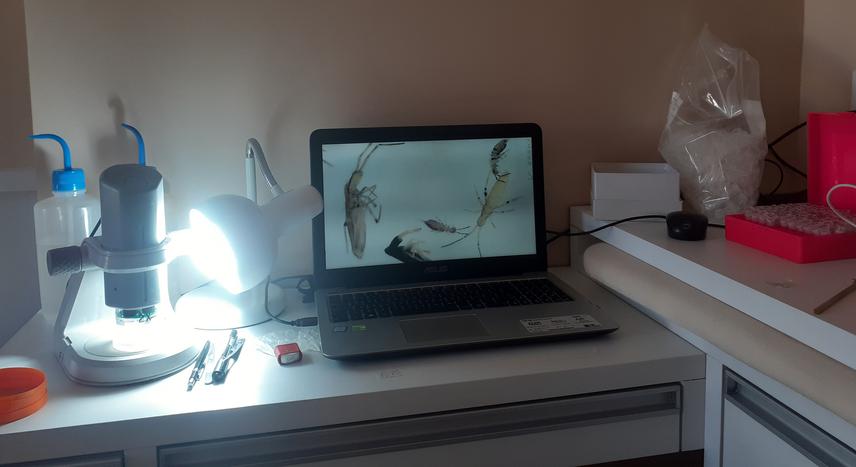Vinicius Tirelli Pompermaier
My aim is to fill the knowledge gap on the springtail community (Hexapod: Collembola) diversity and their potential indicator of inorganic nutrient inputs effects on native cerrado vegetation of the central Brazilian Savanna. In order to do this, I will investigate the impacts of nitrogen (N), phosphorus (P), (N + P) and liming (soil pH change) inputs on the taxonomic and functional diversity of epigeic springtails and their trophic interactions in the cerrado soil.

The Brazilian savanna (locally called "Cerrado") has the richest savanna in plant species in the world and its vegetations evolved on old and well weathered soils, which are generally very acidic and with low fertility. Thus, large amounts of lime and inorganic fertilizers are generally added to make these soils productive for agricultural crops in the region, raising concerns on natural ecosystems conservation, since only a small fraction of the added nutrients normally accumulate in soils and biomass. Beyond the direct effects of agricultural activities on plant and animal communities due to vegetation suppression and soil changes, nutrient deposition in adjacent native vegetations may increase due to agricultural intensification. Experiments show that nitrogen addition in native savanna vegetation can alter the carbon allocation of some tree species, increase the soil NO flux, and, through interaction with phosphorus addition, increase the leaf litter quality and its decomposition rate, besides result in plant diversity decrease. These evidences, however, focus on responses of aboveground biodiversity, that is, little is known about the effects of nutrients addition to soil biodiversity and their interactions.
The present study aims to fill part of this gap by making a survey of epigeic springtails diversity of a Central Brazilian savanna. Springtails (Hexapoda: Collembola) represent a very diverse and abundant group in the soil of terrestrial ecosystems, but still unknown at the species level in the Cerrado. Springtails can function as omnivores, consuming a variety of resources, but feed mainly on fungi and decaying organic matter, regulating microbial activity and therefore contribute to decomposition processes and nutrient cycling. Springtails evolutionarily selected morphological and physiological traits have been increasingly studied as potential indicators of environmental changes. In this way, I intend to investigate the potential use of the springtail taxonomic and functional diversity as indicators of changes resulting from the inputs of inorganic nutrients (N, P, and N + P) and liming (soil pH alteration) in the Cerrado.
Here I intend to go further and investigate how the input of nutrients can affect the trophic interactions of springtail species through the combined analysis of nitrogen and carbon stable isotopes, a potential indicator of changes in the basal soil food web and its inherent functions. As long as we can validate these results in the future, they may help us to diagnose the conservation and functional status of cerrado remnants immersed in agricultural landscapes.